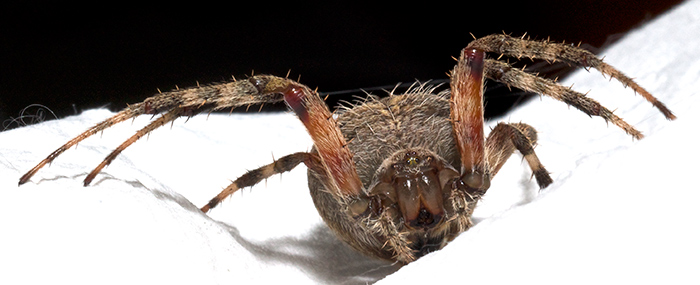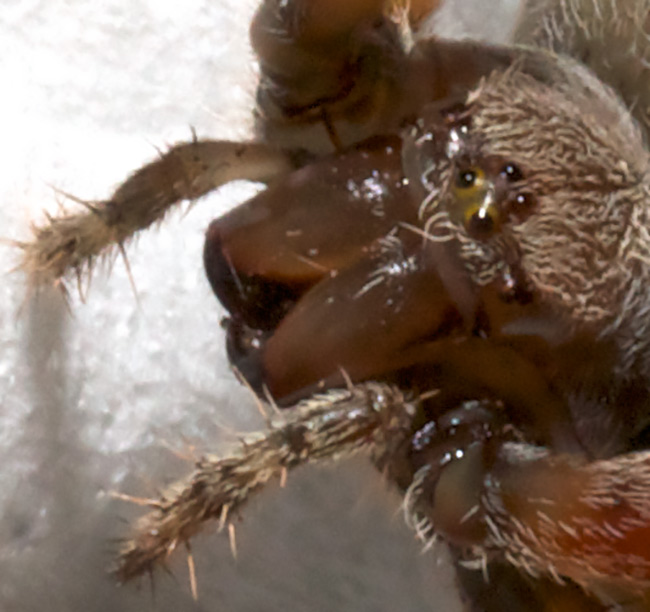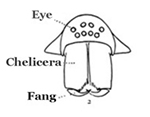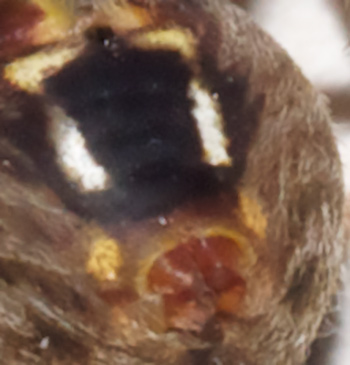
 In an earlier post, I described a Spotted Orbweaver (Neoscona crucifers) that I captured outside our living room window. The photograph above shows a head-on view of the spider. I found the best way to get varying views without injuring it was to let it crawl around on a napkin while I contorted into various poses trying to get the view I wanted. A spider’s “face” is very different as the photograph to the left shows. Nearly all spiders have eight eyes as does this one. In the photograph 6 of the 8 eyes can be seen fairly clearly. Four of its eyes are in a roughly square pattern in the middle of the spider’s “forehead”. There are an additional pair of eyes on each side of the central quartet, but only one of each pair of lateral eyes can be clearly seen (look for the reflections).
In an earlier post, I described a Spotted Orbweaver (Neoscona crucifers) that I captured outside our living room window. The photograph above shows a head-on view of the spider. I found the best way to get varying views without injuring it was to let it crawl around on a napkin while I contorted into various poses trying to get the view I wanted. A spider’s “face” is very different as the photograph to the left shows. Nearly all spiders have eight eyes as does this one. In the photograph 6 of the 8 eyes can be seen fairly clearly. Four of its eyes are in a roughly square pattern in the middle of the spider’s “forehead”. There are an additional pair of eyes on each side of the central quartet, but only one of each pair of lateral eyes can be clearly seen (look for the reflections).
 Below the eyes, two broad, shiny structures hang down. These are the chelicerae, and each has a fang at the end. The two hairy appendages flanking the chelicerae (see the first photograph) are the palps. Spiders have a pair of these in addition to their eight legs. Palps are sensory organs used somewhat like the antennae of insects. They also have a role in mating, because the male uses these to transfer sperm to the female. Use the black and white sketch to the left as a guide to find the various structures.
Below the eyes, two broad, shiny structures hang down. These are the chelicerae, and each has a fang at the end. The two hairy appendages flanking the chelicerae (see the first photograph) are the palps. Spiders have a pair of these in addition to their eight legs. Palps are sensory organs used somewhat like the antennae of insects. They also have a role in mating, because the male uses these to transfer sperm to the female. Use the black and white sketch to the left as a guide to find the various structures.
The photograph to the right shows the bottom side of this spider’s abdomen. Just below the striking black and white marking are a group of spinnerets, which look like little nozzles. A great variety of silk can be produced from these organs, including sticky strands, non-sticky stands and sheets. Microscopically, spinnerets are very complex, with many tiny pores for extrusion of silk.

